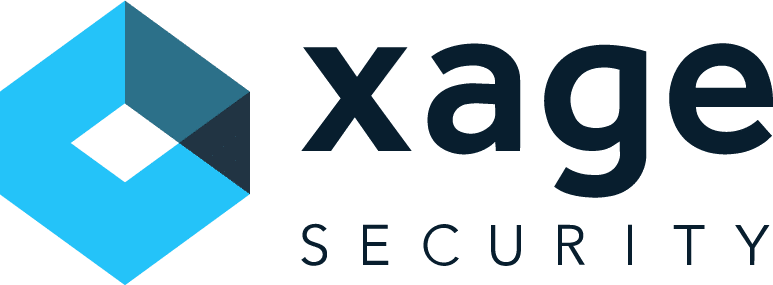In December 2024, a significant cybersecurity breach involving BeyondTrust’s Remote Support SaaS service exposed critical vulnerabilities, showcasing the growing sophistication of state-sponsored cyberattacks. Chinese state-sponsored hackers may have exploited a weaknesses in BeyondTrust’s software, infiltrating U.S. Treasury Department systems. By compromising an API key, the attackers bypassed security controls, gaining unauthorized access to sensitive, unclassified documents on Treasury workstations.
This breach underscores the persistent risks of third-party software dependencies and the evolving tactics of cyber adversaries. It not only disrupted critical operations but also raised alarm about the security tools themselves becoming risk vectors for federal institutions and enterprises. This pattern aligns with a notable increase in VPN-based attacks throughout 2024, emphasizing the urgent need for robust, resilient cybersecurity solutions.
In this blog post, we explore how Xage Security’s zero-trust architecture and Extended Privileged Access Management (XPAM) can proactively protect enterprises from similar attacks, providing unmatched defense against privilege escalation and credential compromise or software vulnerability-based exploits.

Understanding the Threat Landscape
The attack may have targeted BeyondTrust leveraged weaknesses in credential and privilege management systems, specifically through the compromise of an API key, to escalate access rights and infiltrate sensitive networks. Once inside, the attacker was able to perform command injection on the underlying software installation, gaining deeper control over the infrastructure. Such vulnerabilities highlight the risks posed by centralized credential stores and single-layered security models, where a breach in one domain can cascade across interconnected systems.
This highlights how architectures with single points of failure or attack surfaces are inherently vulnerable. This risk is especially significant in remote access and remote privileged access platforms, where compromises can turn these tools into attack vectors rather than security enforcers.
How Xage Mitigates Such Risks
Xage is proud to support CISA’s Secure by Design pledge, emphasizing our unwavering commitment to resilience and security from the very beginning. Our distributed architecture and proactive strategies embody these principles, showcasing our dedication to protecting critical infrastructure from advanced cyber threats. Learn more about our pledge and approach here.
What sets Xage apart is our fundamentally different approach to securing identities and access across critical operations. By addressing the vulnerabilities exposed in incidents like the BeyondTrust attack, Xage’s architecture redefines cybersecurity with these key principles and capabilities:
-
Distributed, Tamper-Proof Architecture
- Distributed Architecture Across Critical Operations: Xage’s innovative distributed design eliminates central points of vulnerability, securing operations across all environments. An attacker would need to compromise multiple nodes simultaneously, a highly improbable scenario.
- Tamper-Proof Ledger: Nodes collaborate through a distributed consensus mechanism with threshold-based encryption, maintaining a tamper-proof ledger that secures operations and prevents unauthorized modifications.
- Independent Verification: Every access attempt is independently verified, ensuring no single compromise can cascade across the system, reinforcing robust security.
-
Defense-in-Depth for Critical Infrastructure
- Defense-in-Depth Architecture: Xage’s design eliminates single points of failure, ensuring robust resilience against sophisticated attacks.
- Layered Security Model: Each layer operates independently, so even if one layer is compromised, subsequent layers remain secure, effectively containing lateral movement and safeguarding critical assets.
-
Zero-Trust Enforcement
- Zero-Trust Framework: Xage rigorously verifies every request to ensure only authorized actions are permitted.
- Least-Privilege Access Controls: Access is restricted to the minimum necessary, reducing exposure to threats.
- Escalation Prevention: Even if an attacker gains initial access, privilege escalation is blocked.
- Lateral Movement Defense: Robust controls prevent attackers from moving laterally within the system, containing potential threats effectively.
-
Multi-Layered Identity and Access Control
Unlike traditional solutions, Xage dynamically enforces granular access policies at every layer of the architecture, providing robust protection against advanced threats.
- Dynamic Enforcement of Granular Access Policies: Policies are enforced at every level, from endpoints to cloud services, ensuring tight control over access.
- Ephemeral Credentials: Privileges are tightly scoped and temporary, minimizing the risk of exploitation.
- Asset-Level Authentication: Multiple levels of authentication, including per-asset authentication, ensure that a compromise in one layer does not affect other assets.
- Comprehensive Layered Security: A multi-layered approach reinforces overall system resilience and reduces the risk of breaches.
-
Credential Protection and Rotation
- Automated Credential Management: Xage’s XPAM streamlines credential management by continuously rotating secrets and passwords, effectively eliminating the risk of stale or exposed credentials.
- Decentralized Vaulting: By removing reliance on centralized vaults, Xage eliminates the vulnerabilities associated with vault breaches, enhancing overall security.
-
API Key Management and Protection
- Secure API Key Management: Xage protects API keys with robust access controls and automated rotation, ensuring they remain secure and up-to-date.
- Granular Policy Enforcement: API keys are restricted to specific, predefined functions, significantly minimizing their exposure and reducing the risk of misuse.
-
Command Injection Mitigation
- Prevention of Command Injection: Xage employs rigorous validation and input sanitization processes to block malicious command injection attempts effectively.
- Minimized Blast Radius: Through segmentation and isolation strategies, Xage ensures that even if an exploit occurs, its impact is contained and limited to a minimal scope.
-
Continuous Monitoring and Threat Response
- Real-Time Anomaly Detection: Xage continuously monitors for suspicious activities, providing instant alerts to security teams to address threats before they escalate.
- Automated Remediation: Swift, automated containment and recovery mechanisms ensure rapid response to mitigate risks and minimize downtime.
Xage Stands Apart
Xage is purpose-built to protect critical operations and seamlessly extends its capabilities across IT, OT and cloud infrastructures, delivering unified security that adapts to modern hybrid ecosystems. Unlike traditional solutions, Xage eliminates single points of vulnerability and dynamically scales to secure complex, distributed environments—making it particularly effective against sophisticated threats like the Treasury attack.
The Treasury attack highlights that even advanced cybersecurity tools can fall short if they rely on centralized architectures or outdated privilege management models. Xage redefines enterprise protection with its zero-trust, decentralized framework, ensuring resilience against evolving and increasingly sophisticated cyber threats.
Discover how Xage can protect your enterprise from modern cyberattacks – book time with our team.









